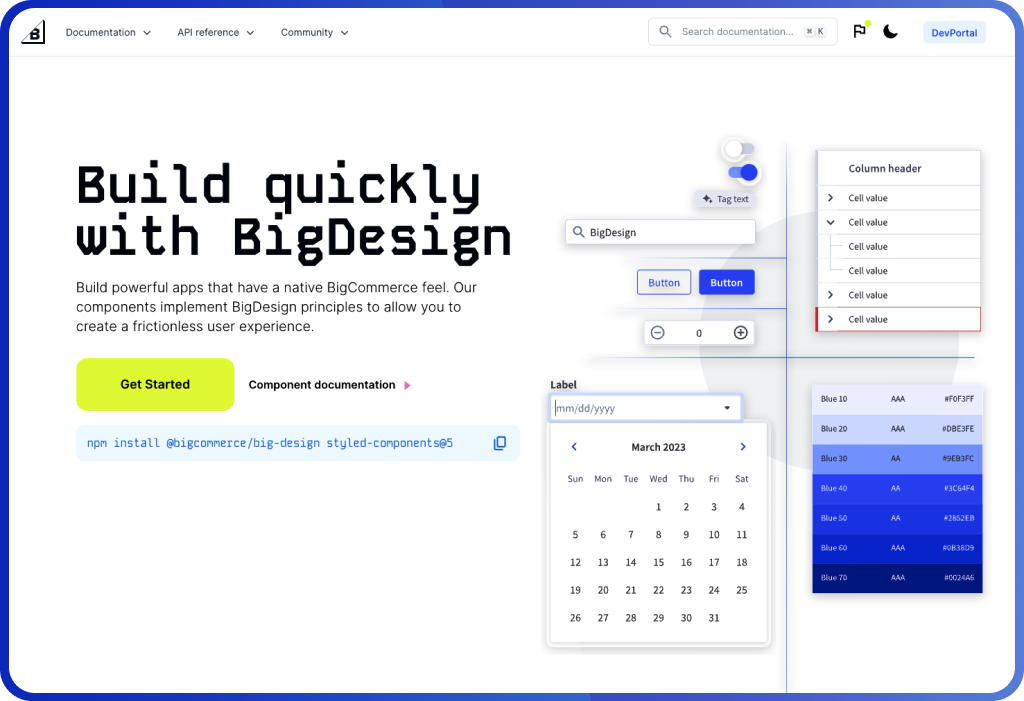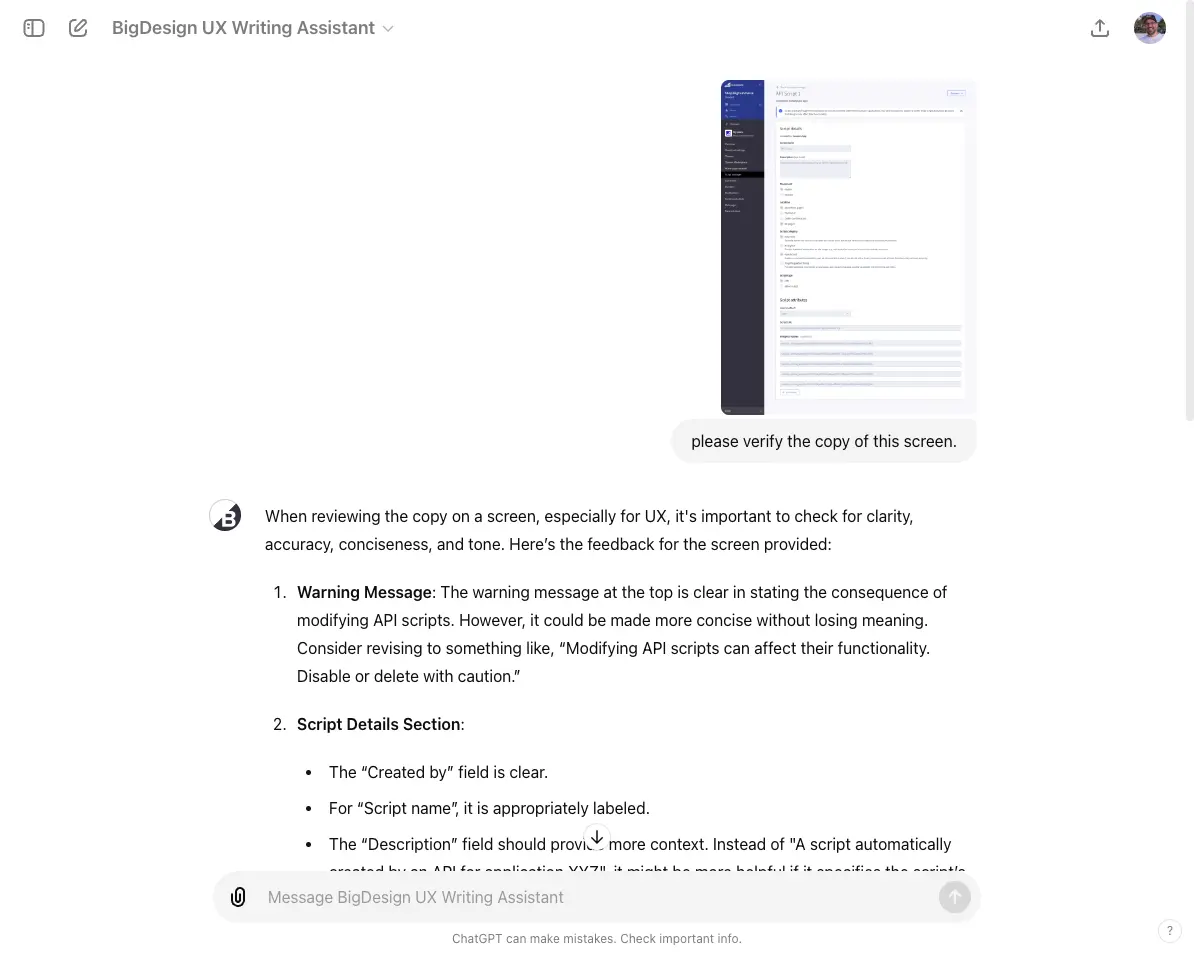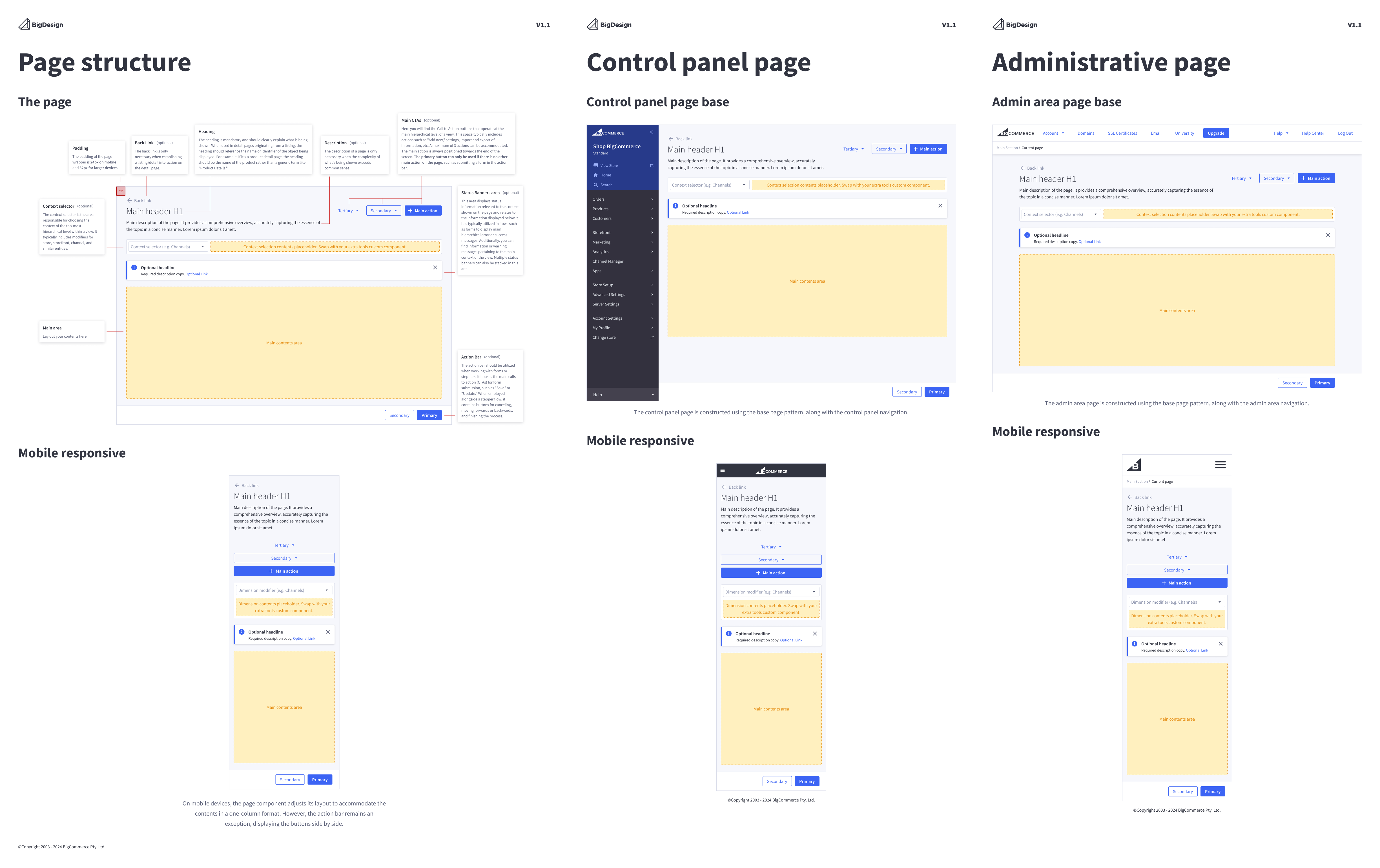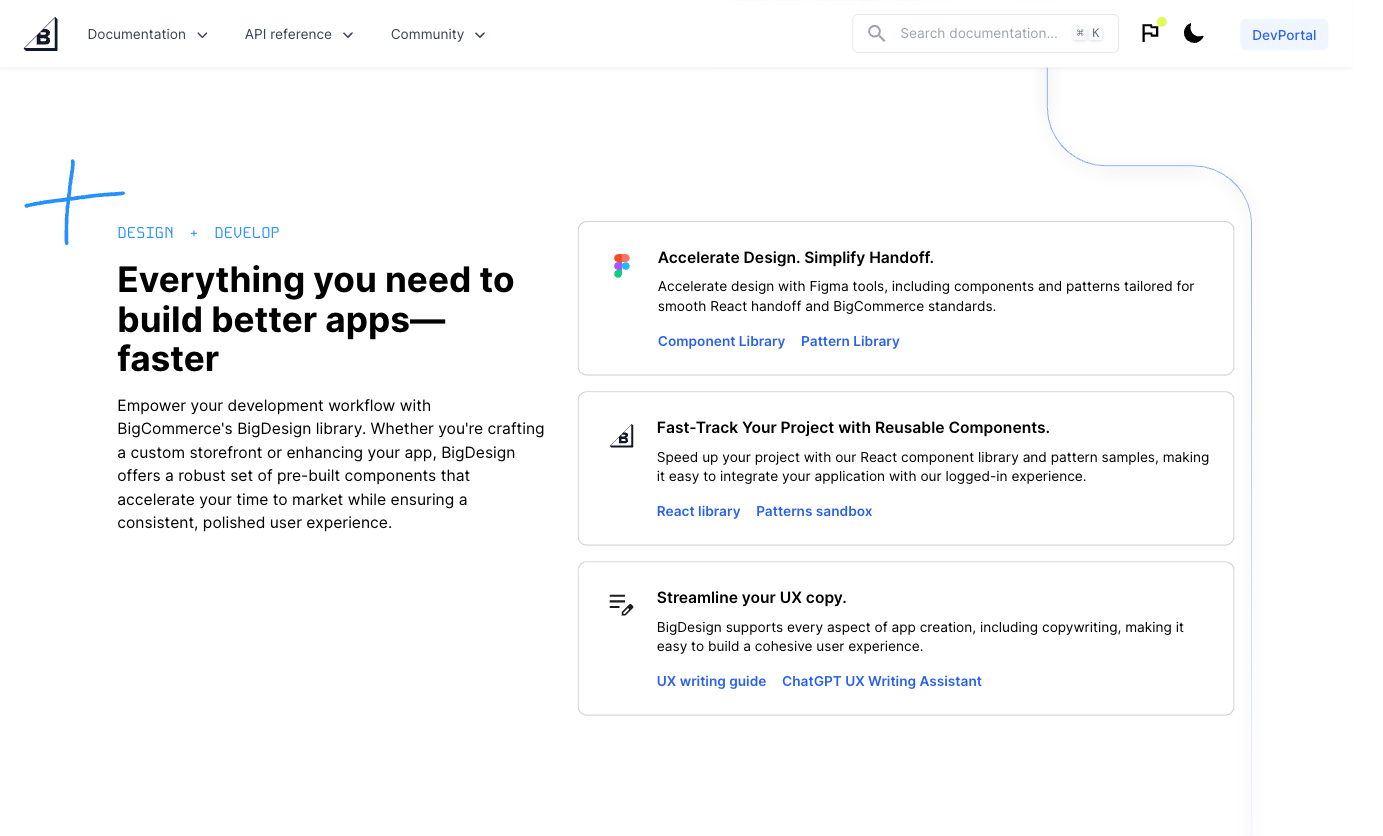BigCommerce Platform Design (2024 - 2025)

As Manager of Platform Design, I lead a cross-functional team that owns the systems, tools, and standards behind BigCommerce’s design and front-end development. I set the vision, guide day-to-day execution, and partner across product, design, and engineering to deliver consistent, scalable results for both internal teams and third-party developers.
The Challenge
As BigCommerce grew, product development sped up—but consistency suffered. Teams worked quickly, often without coordination. Shared patterns were rebuilt from scratch. Interfaces looked and behaved differently across features. The platform started to feel disconnected.
One key issue was the way BigDesign, our design system, was managed. At the time, it followed a federated model. If a team needed a new component or a tweak to an existing one, they had to:
- Build it themselves
- Fit the work into their sprint
- Publish updates without review
- Own the maintenance long-term
Most teams skipped the system entirely and built custom solutions. These fixes worked short-term but couldn’t be reused or maintained at scale.
This led to:
- Inconsistent UI across the product
- Duplicated design and engineering effort
- Delays due to missing or outdated components
- A system with no clear ownership or support
The solution wasn’t just better documentation. What we needed was a team to own the system, improve it, and work directly with teams to make adoption easier.
The Solution: Platform Design
I started the Platform Design team to take clear ownership of BigDesign and support product delivery at scale. Our role is to provide the design infrastructure that helps teams move faster, build more consistently, and deliver better experiences.
- System Ownership
We manage BigDesign’s React and Figma libraries, write guidelines, and ensure design-to-code alignment. - Component Reuse at Scale
We build once and apply everywhere. No more one-off fixes or throwaway work. - Governance and Standards
We support design and engineering through reviews, documentation, and direct support. - Developer Enablement
We help internal and external teams use our tools the right way, with less friction. - System Evolution
We identify gaps and expand the system as product needs grow.
Collaboration That Works
We work closely with both designers and developers to make BigDesign useful, usable, and easy to adopt.
- We host weekly feedback sessions with product designers to align early work with system standards and identify reusable patterns.
- Developers reach us through Slack, email, and internal forums. We answer questions, unblock work, and guide implementation directly.
- We take part in design reviews to catch system needs before they go live and guide contributions through our Feature Intake Process.

Our goal is to be a real partner, not just a gatekeeper. We help teams get the most out of BigDesign and avoid wasted effort.
Key Projects
BigDesign Component library
We maintain a shared library of production-ready React components and matching Figma files. It supports dozens of teams across BigCommerce and external partners, ensuring visual and behavioral consistency across the platform.
BigDesign Pattern library
We built and maintain a pattern library that defines how components work together. These patterns cover common UX challenges like onboarding, filtering, navigation, and empty states. They help teams build faster and more predictably.
BigDesign UX writing assistant

To improve copy quality across the platform, we created a GPT-powered writing assistant. Integrated with our tools, it helps designers and writers stay aligned with voice, tone, and accessibility standards. It also speeds up iteration and reduces content debt.
Catalyst Storefront – Base Design
Catalyst is our out-of-the-box storefront experience. We designed the base templates and component system to support fast customization and reliable production use. Agencies and developers can use it as a starting point that still aligns with platform best practices.
Documentation and Tooling
We built a central hub for documentation, live examples, contribution guides, and design references. This helps new teams onboard quickly and reduces confusion about what to use and how to use it.
Our Team
As team lead, I define our vision, run daily operations, and lead the Feature Intake Process. I contribute directly to both Figma and React libraries, guiding architecture, maintaining components, and supporting adoption.

| Member | Title | Focus |
|---|---|---|
| Turner Vickery | Lead Product Designer | Focused on governance, Figma maintenance, and collaboration with product designers. |
| Georgia Hough | Senior Product Designer, Developer Experience | Improves tooling, documentation, and developer workflows across the ecosystem. |
| Engineering Stewards | Staff & Senior Front-End Engineers | Partner with us on system alignment, code quality, and best practices. |
What’s Next
- Expanding layout and interaction components
- Designing patterns for new AI-powered features
- Overhauling developer docs for easier onboarding
- Improving customization paths in Catalyst
- Cleaning up legacy UX across older product areas
Why It Matters
Shifting from a federated system to a centralized team changed how BigCommerce ships product. Teams now move faster, with fewer inconsistencies and better support. The design system is trusted, well-used, and actively maintained—because the people behind it are visible, reliable, and focused on helping others succeed.



